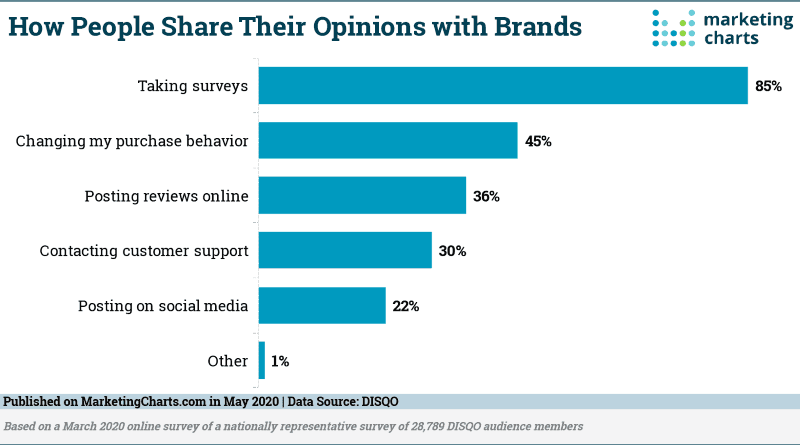
Intro
Many brands make one common mistake with their content strategy: assuming high traffic will automatically lead to high conversion. Unfortunately, it doesn’t.
Plenty of potential customers might click through to a site, only to realize it’s irrelevant and click away, leaving a high bounce rate and low conversions. In order to capture their attention, you want to create relevant, engaging content - and you can do this through pain-point SEO.
What is Pain-Point SEO?
Pain-point SEO is a conversion-oriented strategy of content creation. It emphasizes solution-based content that’s targeted at customer pain points - in other words, the problems they are facing.
That means any content created is designed to provide answers, solutions, or help with these problems, and the keywords targeted are usually the ones looking for something specific.
Using Long-Tail Keywords for Pain-Point SEO
One of the defining features of pain-point SEO is the use of long-tail keywords (keyword searches that are three or more words long).
![]() (Source: ahrefs)
(Source: ahrefs)
The image above helpfully highlights two key points about searches.
- Long-tail searches are more specific and therefore, more intent-driven.
- The vast majority of searches performed are long-tail, numbering in the billions.
Intent driven searches are almost always going to be long-tailed keywords. Typically, ‘head’ and ‘middle’ keywords are used to find something they already know about - for instance, a brand name.
Let's assume that you have started a small business and are having issues making sales. That would count as your ‘pain point’. You might begin by Googling ‘sales ideas’, and get a huge range of articles, but none of which specifically help you find a solution. Your next search is for lead generation strategies instead. Since this is more specific, you get results that help you - and also, those results might lead you to sign up to an email list or purchase some relevant software.
How to Identify Customer Pain Points
Now we know what pain-point SEO is and why long-tail keywords are so important, how do we go about finding out what customer pain points actually are in order to target them?
The All-in-One Platform for Effective SEO
Behind every successful business is a strong SEO campaign. But with countless optimization tools and techniques out there to choose from, it can be hard to know where to start. Well, fear no more, cause I've got just the thing to help. Presenting the Ranktracker all-in-one platform for effective SEO
We have finally opened registration to Ranktracker absolutely free!
Create a free accountOr Sign in using your credentials
![]() (Source: pixabay)
(Source: pixabay)
Typically, pain points can be broken down into three areas:
-
Financial pain points: potential customers that are concerned about the price point for the goods or services they require.
-
Support pain points: these searchers are looking for help with something they own, or for options that have great ongoing support.
-
Efficiency pain points: potential customers that have an issue with how time or resource-intensive a current service or product is.
Searches like ‘cheap web audit solutions’ fit obviously into one category - they’re about finances. However, not all searches are quite as easy. If someone searches for ‘small business management tips’, they might have financial questions, but they might also just be looking for resources. It’s worth bearing this in mind when researching.
Now we know what kinds of pain points customers might be experiencing, we need to establish exactly what our target audience’s pain points are.
Customer research
It will come as no surprise that in order to find out what pain points a customer is experiencing, customer research needs to be carried out. This should be to current customers as well as past and prospective. You should already be measuring customer satisfaction, and monitoring other relevant metrics like conversion rates.
 (Surveys are overwhelmingly the most common form of custom research. However, you shouldn’t ignore existing feedback from reviews and comments on social media! Source)
(Surveys are overwhelmingly the most common form of custom research. However, you shouldn’t ignore existing feedback from reviews and comments on social media! Source)
Surveys are a fantastic way to find out about customer pain points. Ensure that when structuring your survey questions you make them open-ended so that you receive as much information as possible.
A few examples of good questions to ask might be:
-
‘What issue were you experiencing when you found our brand?’ - This is a direct question that should reveal the specific pain point the customer was experiencing.
-
‘Besides us, what other brands have you considered using?’ - This provides information on competitors.
-
‘If a friend or a family member were to ask about our brand, how would you describe it to them?’ - This should elicit some keywords and phrases that customers associate with your service.
-
‘If you had to choose 3 things you love most about our service, what would they be?’ - Again, elicit more keywords and phrases that will help you establish how customers see your brand.
The answers to the above questions, and questions like them, will inform the kind of content ideas you should be looking to create.
The All-in-One Platform for Effective SEO
Behind every successful business is a strong SEO campaign. But with countless optimization tools and techniques out there to choose from, it can be hard to know where to start. Well, fear no more, cause I've got just the thing to help. Presenting the Ranktracker all-in-one platform for effective SEO
We have finally opened registration to Ranktracker absolutely free!
Create a free accountOr Sign in using your credentials
If relevant to your business model, don’t forget other non-virtual customer research methods, such as in-person interviews, phone questionnaires and postal surveys.
When analyzing the results of your surveys look for any trends that emerge. You’ll likely find that the same idea can be presented in a multitude of different ways, so try and pick out key terminology from your responses.
Things to take away from the customer research should be:
- The most common pain points experienced
- Keywords that frequently appear in responses
- Competitor brand names and domains
- What your customers appreciate most about your brand
- How people view your brand
The keywords that customers associate with your brand can then be input into a keyword finder to give information that will inform your content creation. From there you’ll see how competitive each keyword from your research is, as well as how expensive it is if you are considering a paid source of affiliate traffic.
The All-in-One Platform for Effective SEO
Behind every successful business is a strong SEO campaign. But with countless optimization tools and techniques out there to choose from, it can be hard to know where to start. Well, fear no more, cause I've got just the thing to help. Presenting the Ranktracker all-in-one platform for effective SEO
We have finally opened registration to Ranktracker absolutely free!
Create a free accountOr Sign in using your credentials
Armed with your customer base's pain points, the keywords they associate with your brand, and who your competitors are, you can start creating content.
Top Tip: Keywords are also super important when naming your blog and choosing article title tags. Both of these appear on a search engine results page (SERP). SERP Simulator tools allow you to check how your post will appear on Google to make sure it looks how you want it to.
Creating Pain-Point SEO Content
When it comes to creating pain-point SEO content, there are four styles that can be good to start with.
- Top 5 list - This template provides a list of the best products or services for the pain point they are addressing. For example, ‘Top 5 lead generation strategies’ or ‘Top 5 ways to improve remote office communication’. Although typically top five, anything below ten is usual.
In this type of content, you want to provide a list of solutions to the pain point you have chosen to address based on your customer research. Perhaps you offer domain creation and want to address customers who struggle to increase .AU domain presence. Your post might be ‘Top 5 ways to build your Australian domain’.
- Comparison posts - This template targets a competitor directly and gives a breakdown of the benefits of your service vs theirs. For example, ‘Google vs Bing: 2022 comparison’. It is important to note here the comparison should be objective and provide honest benefits of both.
Understanding your customer's key pain points can definitely serve to highlight the best aspects of your product or service against a competitor. Comparison posts also have the benefit of using the strength of your competitor's brands in keyword searches. Customers searching for your competitor with their pain point keywords may come across your post and discover your brand as a result.
- Alternatives to… - Similar to comparison posts, this content template gives a list of alternatives to your competitor. For example, ‘The best Microsoft Suite alternatives 2022’.
Again, this type of content will have the benefit of using competitor brand strength to your own advantage. Customers who are searching for alternatives to your competitor are by nature ready and willing to sign up with someone else. This can only be good from a conversion perspective.
- Problem solving articles - This type of content presents the customer's pain point along with a how-to guide on fixing it. Throughout this type of article, post, or video tutorial, your product or service is ever-so-gently shown to fix the problem at hand. They don’t have to be simple step-by-step guides, either - you could offer something like ‘How to deliver consistent customer service’ if you sell contact center solutions, for instance.
The art of subtlety here really cannot be overstated. Customers don’t want to read an ad. They want the content to resonate with their problem and be given a viable way to fix it.
All of the content archetypes above require a thorough understanding of what your customer's pain points are and how they go about finding solutions. Implementing all four is a great way to diversify your content and ensure as many keyword searches are linking to your content.
![]()
Conclusion
Pain point SEO requires a complex knowledge of your customers, their problems, your competitors, and how search engines prioritize results. Many businesses nowadays are finding that this effort more than pays off though, with higher conversion percentages and high rates of engagement with their content.
Remember: people who are using long-tail keyword searches are close to making a purchase or subscription. By targeting this group with the right content, at the right time, you will see more conversions.
About Author
Jenna Bunnell - Senior Manager, Content Marketing, Dialpad
Jenna Bunnell is the Senior Manager for Content Marketing at Dialpad, an AI-incorporated cloud-hosted unified communications system that provides valuable call details for business owners and sales representatives. She is driven and passionate about communicating a brand’s design sensibility and visualizing how content can be presented in creative and comprehensive ways. Jenna has written for domains such as Voilanorbert and Codemotion. Check out her LinkedIn profile.

